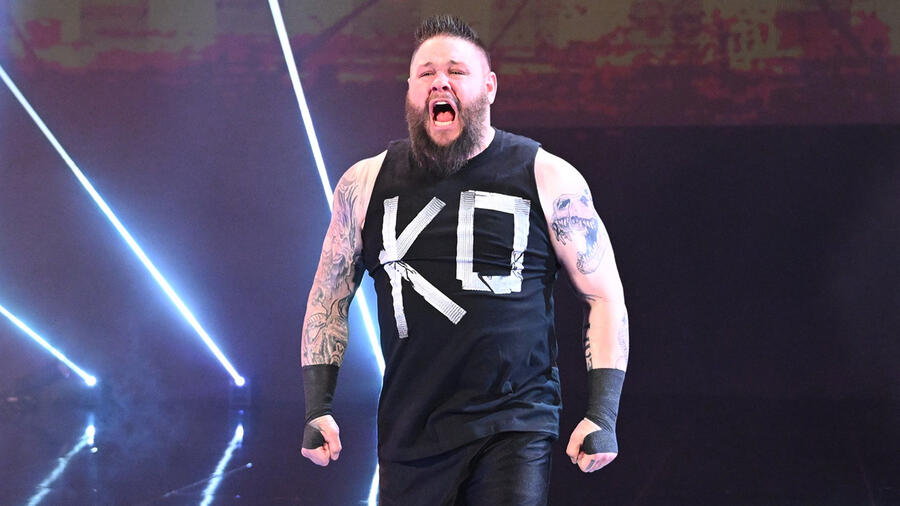Major Update on Kevin Owens’ Future with WWE
A major update has arrived regarding the future of WWE SmackDown and former Universal Champion Kevin Owens. The Prizefighter is currently involved in a controversial situation following his attack on Cody Rhodes at WWE Bad Blood 2024.
Kevin Owens has been unhappy with Cody Rhodes for teaming up with Roman Reigns to take on the new Bloodline. He had confronted Rhodes backstage after the show, where he finally lost his temper and attacked him. This shocking incident went viral on social media.
Owens’ frustration also led him to attack Randy Orton last week on WWE SmackDown. Following this controversy, Owens has given WWE an ultimatum to share his side of the story. He wants to justify his actions against Cody Rhodes at WWE Bad Blood 2024. Recently, he shared a video on X (formerly known as Twitter), stating that he would deal with the situation in his own way if the promotion did not allow him to share his story.

Amidst this, it has been reported that Kevin Owens’ current WWE contract will expire in early 2025. A few weeks ago, reports surfaced that he was negotiating a new contract with WWE. However, it was also revealed that their competitor, AEW, also expressed interest in him. Now, it appears that the chances of AEW offering Owens a deal are dwindling.
Kevin Owens set to sign new WWE contract soon
According to the latest reports from WrestleVotes’ Live Q&A backstage pass, a significant update emerged regarding Kevin Owens’ future with WWE. They revealed that Owens is very close to signing a new deal with the promotion.
With this information, it seems likely that fans will see Owens in the WWE ring for the foreseeable future. An announcement regarding his new contract could come in the next few months, as his current contract is set to expire in early 2025.
Welcome to Car and Driver’s Testing Hub, where we zoom in on the test numbers. We’ve been pushing vehicles to their limits since 1956 to provide objective data to bolster our subjective impressions (you can see how we test here).
Now that we’ve had a Volkswagen ID.Buzz at our office and put it through our rigorous testing, we figured it’s as good a time as any to compare its test results with the Kia EV9. As things currently stand, the pair are the most affordable family-sized three-row EVs that you can buy.
For the 2025 model year, the entry-level, rear-drive version of the Kia starts at $56,395, while VW’s van carries a $61,545 base price. All-wheel-drive models start at $65,395 and $69,545, respectively, but the ones we tested had most of the best features, making them quite a bit pricier—$72,065 for the ID.Buzz Pro S Plus and over $77K for the EV9 GT-Line.
An EV’s driving range is one of its biggest selling points. Of course, there’s typically a big difference between the EPA’s combined-range figure that’s listed on the window sticker and what you’ll see in real life, especially at sustained highway speeds. Going, say, 75 mph at a steady cruise will suck the juice out of the battery much quicker than schlepping around town at a slower, stop-and-go pace. The former scenario is what our real-world highway test aims to replicate. It’s also where the EV9 GT-Line, which features a 99.8-kWh battery, made it 240 miles on a full charge. That’s 30 miles shy of its 270-mile EPA estimate, but it’s also 50 miles farther than the ID.Buzz Pro S Plus.
The VW only made it 190 miles in our highway test—41 miles short of its 231-mile EPA estimate. It’s worth noting the ID.Buzz has a smaller 86.0-kWh battery capacity, but it still consumed more energy on the highway than the EV9, with the van averaging 2.2 miles per kilowatt-hour versus the SUV’s 2.4 mi/kWh. The electric SUV also has a slight advantage when it comes to DC fast-charging, where its 215-kW peak is higher than the Buzz’s 200 kW—though our test model slightly outperformed its claimed peak. The EV9 GT-Line’s fast-charging time was impressive, going from 10 to 90 percent in 38 minutes, with the electric van taking just 33 minutes thanks to its smaller battery.



